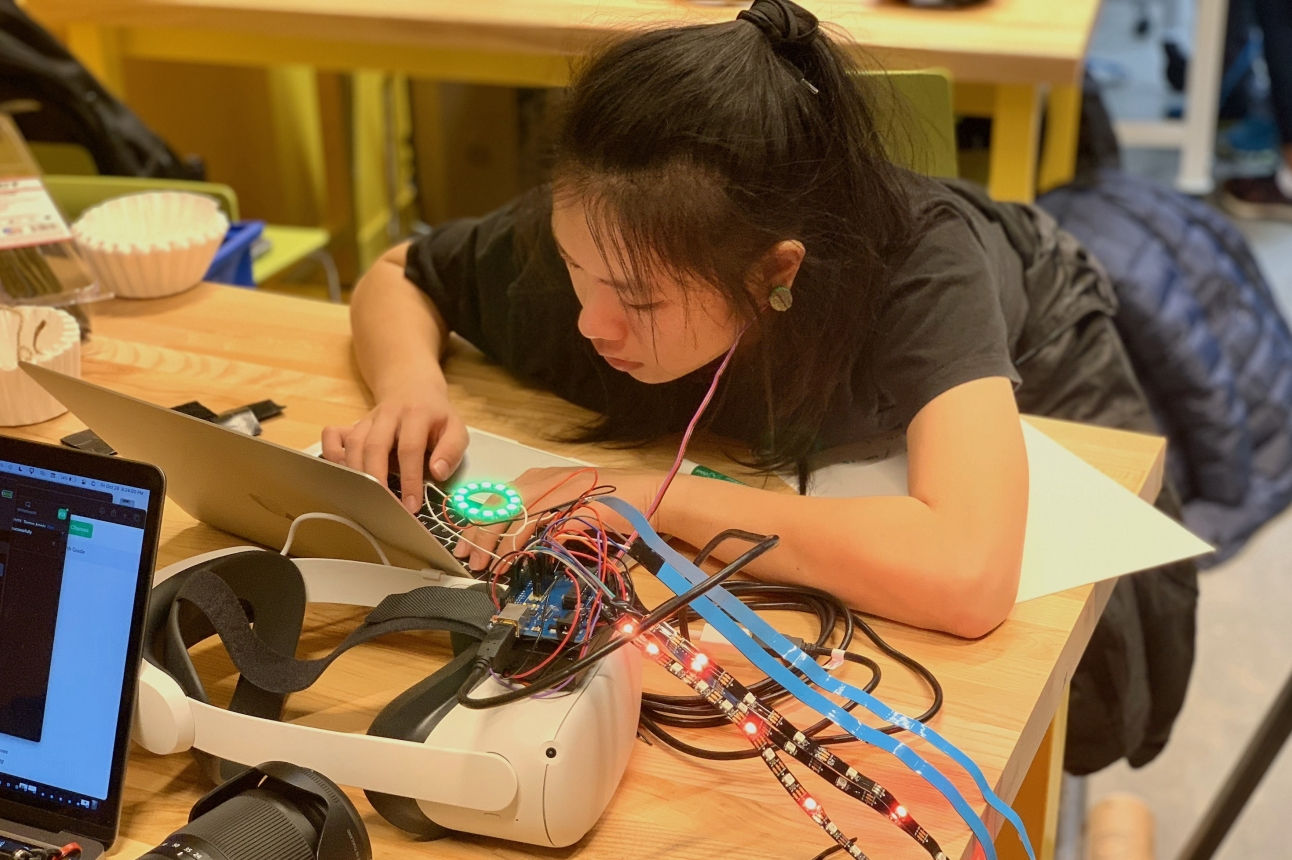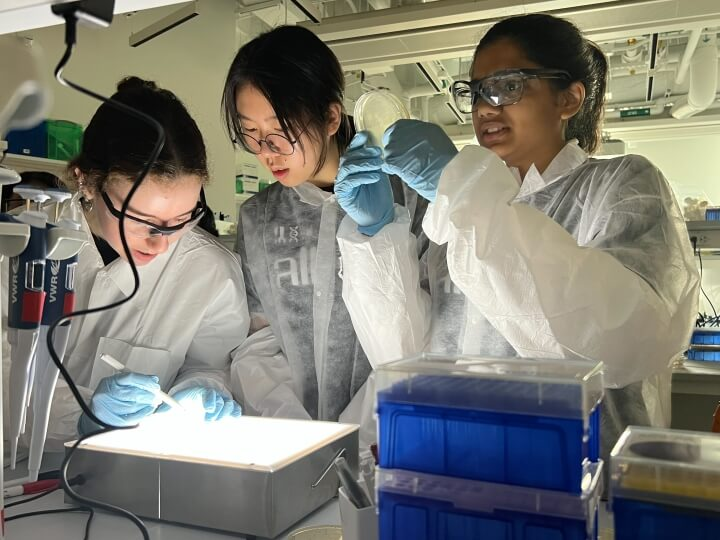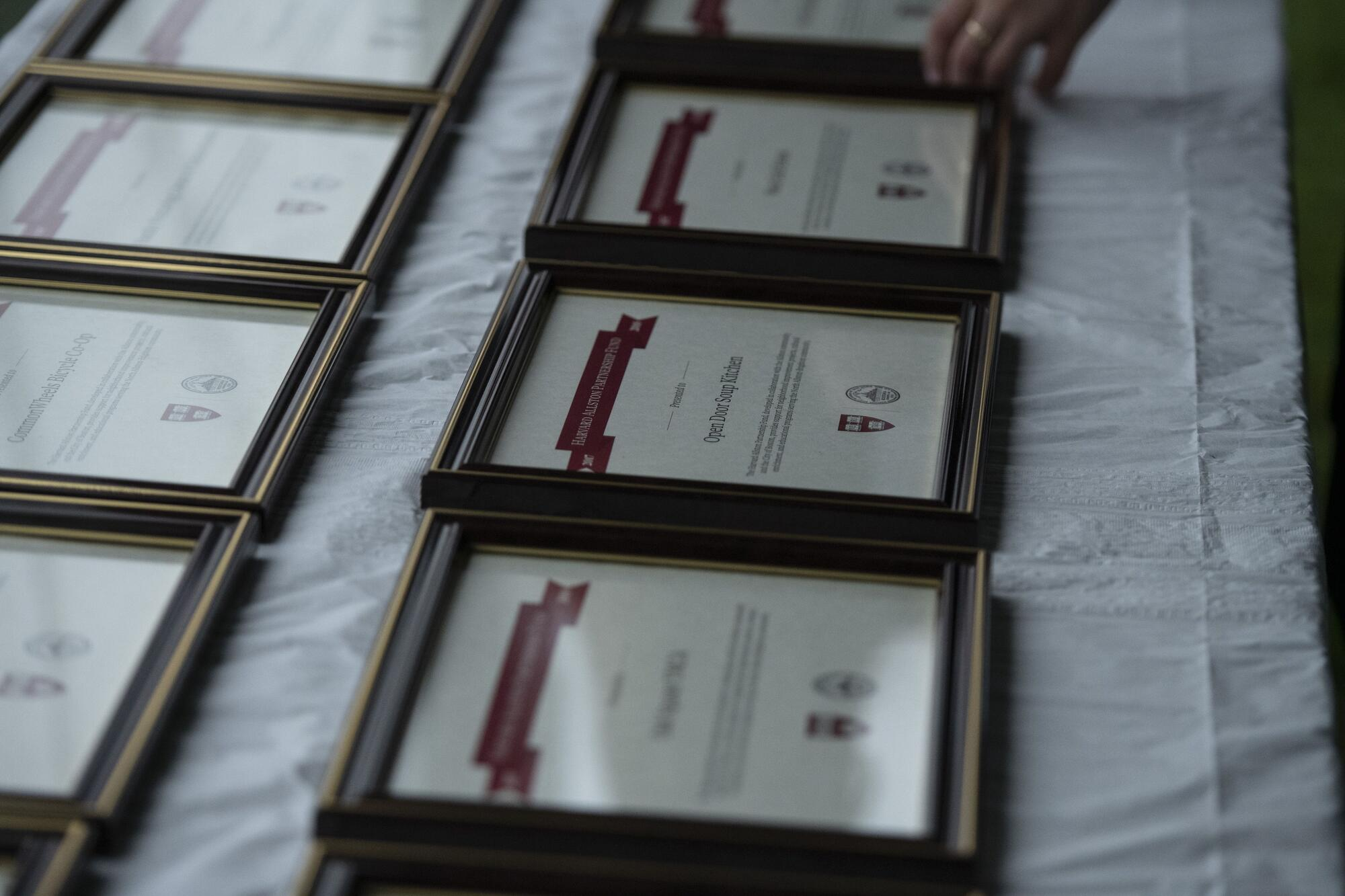
Harvard Active Learning Labs offers high school students an unparalleled opportunity to immerse themselves in the world of science and engineering. With a focus on hands-on learning, the lab programs empower young learners to explore complex topics like CRISPR gene editing and environmental challenges. Students engage in cutting-edge experiments, such as culturing cancer cells and creating drug delivery nanoparticles, under the guidance of esteemed faculty and researchers. By providing accessible bioengineering opportunities, Harvard Active Learning Labs not only fosters academic growth but also ignites passion in aspiring scientists, ensuring they leave with valuable experience and skills. This initiative exemplifies the University’s commitment to enhancing high school science programs, paving the way for future leaders in the STEM fields.
The Harvard Active Learning Labs serve as a gateway for high schoolers eager to delve into scientific exploration and innovation. Focusing on experiential learning, these programs bridge the gap between theoretical concepts and practical application, particularly in areas such as genetic modification and sustainable engineering practices. Young participants engage in spirited hands-on projects, developing crucial skills that will serve them in bioengineering and environmental science careers. By unlocking access to advanced research tools and methodologies, the labs empower students to confront real-world challenges through collaborative learning. Overall, the Harvard Active Learning Labs create an enriching environment that cultivates the next generation of scientific thinkers.
Exploring CRISPR Gene Editing in High School Programs
CRISPR gene editing has become a pivotal aspect of modern biological research, and high school programs like BioSTAR at Harvard’s Active Learning Labs are introducing students to its powerful techniques. Participants learn the intricacies of using CRISPR/Cas9 technology, which allows for precise modifications of DNA. This hands-on approach not only demystifies gene editing but also sparks interest in bioengineering careers among teens who may have otherwise been unaware of these opportunities. By actively engaging with real genomic experiments, students can experience first-hand the thrill of scientific discovery and its implications for future medical advancements.
The excitement of working with CRISPR isn’t just about the technical skills; it’s about understanding the broader impact of gene editing on fields such as disease treatment and environmental studies. High school students like Mikhal Shvartsman share their experiences of using CRISPR to deactivate gene expression in bacteria, a foundational skill that can lead to more sophisticated applications in cancer therapy and agricultural innovation. Through programs designed for accessibility, Harvard’s Active Learning Labs ensure that the next generation of scientists feels empowered to explore these cutting-edge technologies.
Hands-On Learning in Bioengineering Programs
Hands-on learning is at the forefront of Harvard’s Active Learning Labs, where students dive into the practical aspects of bioengineering through programs like BioSTAR and EnviroSTAR. These immersive experiences are structured to give high school students a taste of real laboratory work, thereby increasing their engagement and understanding of complex scientific concepts. From culturing cancer cells to constructing water filtration systems, students gain valuable skills that transcend traditional textbook learning. This experiential approach fosters critical thinking and problem-solving abilities essential for success in science and engineering careers.
Moreover, the collaborative environment within these programs allows students to work alongside peers from diverse backgrounds. This not only enhances the learning experience but also emphasizes the importance of teamwork in scientific endeavors. As students navigate challenges and celebrate successes in their projects, they develop a sense of community and shared purpose. The emphasis on hands-on learning at Harvard’s Active Learning Labs exemplifies how educational programs can effectively prepare students for future challenges in bioengineering and other scientific fields.
Bioengineering Opportunities for Future Innovators
In recent years, bioengineering has emerged as a dynamic field with vast opportunities for innovation and career growth. Programs like those offered at Harvard’s Active Learning Labs are pivotal in inspiring young minds to explore these pathways. By introducing high school students to bioengineering concepts and techniques, the labs not only cultivate interest but also equip them with foundational skills that are increasingly sought after in both academic and professional settings. For students, being able to learn about drug delivery mechanisms and genetic modification techniques opens doors to further studies and careers in health, sustainability, and environmental sciences.
As the demand for skilled bioengineers continues to rise, initiatives at institutions like Harvard play a crucial role in shaping the next generation of innovators. Students enrolled in these programs gain insights into the latest research trends and technological advancements, positioning them well for future education in bioengineering or environmental engineering programs. Moreover, by addressing real-world challenges, such as cancer treatment and water quality, these students become not just spectators but active participants in the scientific dialogue, fostering a sense of responsibility and urgency toward solving global issues.
Environmental Engineering: Tackling Global Challenges
Environmental engineering is a vital discipline that addresses pressing global challenges such as clean water access, pollution control, and sustainable resource management. Programs like EnviroSTAR at Harvard’s Active Learning Labs provide high school students with a unique opportunity to engage with these critical issues through hands-on activities and collaborative projects. For instance, students learn to test local water quality and develop filtration systems, equipping them with both theoretical knowledge and practical skills. This multifaceted approach ensures that participants understand the importance of environmental stewardship and the engineering solutions that can facilitate it.
Through direct engagement with concepts and tools used in environmental science, students are prompted to think critically and innovatively about how to address not only local but also global environmental concerns. They experiment with ways to filter water and remove contaminants, which instills a deeper appreciation for the complexities of environmental systems. Such experiential learning plays a crucial role in training the next generation of environmental engineers who will be responsible for crafting sustainable solutions to the world’s urgent problems.
The Role of Collaboration in Science Education
Collaboration is a cornerstone of effective science education, and programs like those at Harvard’s Active Learning Labs beautifully illustrate its importance. High school students from around the world come together to delve into scientific concepts while also bringing their diverse perspectives and ideas into the mix. This collaboration fosters an enriching learning environment where students can learn from each other, enhancing their creative abilities and deepening their understanding of complex topics such as CRISPR technology and environmental issues.
Working in teams allows students to tackle real-world problems more effectively, as they learn to communicate their ideas and challenge each other’s thinking. Whether they’re discussing the implications of their findings in a laboratory setting or collaborating on design projects, the emphasis on teamwork within these programs equips students with skills that are essential in both academic and professional contexts. Ultimately, by nurturing a collaborative spirit, Harvard encourages future scientists and engineers to approach their fields with a sense of community and collective responsibility.
Experiencing Real-World Science Challenges
Harvard’s Active Learning Labs provide high school students with a chance to engage in real-world scientific challenges that resonate with current global issues. Through their courses, students conduct experiments related to cancer therapies, water quality analysis, and bioengineering, offering them invaluable insights into the practical applications of their studies. By addressing pressing societal challenges, students learn to appreciate how their knowledge can be leveraged to contribute solutions that have significant impacts on communities and the environment.
Participating in hands-on projects, students experience first-hand the hurdles that scientists face when conducting research. This immersion in practical problem-solving fosters resilience and adaptability, as they work through issues in a laboratory environment or while conducting fieldwork. Collectively tackling these challenges not only cultivates their scientific acumen but also motivates them to explore careers where they can make a meaningful difference. The experience gained at Harvard’s labs thus empowers the next generation of scientific leaders to pursue innovations that address complex real-life situations.
The Importance of Field Work in Science Education
Field work is an essential component of science education and is prominently featured in training programs at Harvard’s Active Learning Labs. Students don’t just remain confined to the classroom; they venture outside to gather data from local water sources and learn about environmental monitoring firsthand. Such experiences enrich their understanding of science by allowing them to observe and interact with the environment directly, reinforcing the theoretical concepts covered in the classroom.
Engaging in field work helps students to appreciate the complexities of environmental challenges and the interdisciplinary nature of scientific solutions. It also prepares them for future studies or careers in fields like environmental engineering by exposing them to real-world applications of their learning. As they examine water samples and assess their quality, they come to understand the critical importance of clean water access and the engineering marvels that make it possible. This practical experience is invaluable in cultivating the next generation of scientists who are ready to tackle environmental issues head-on.
Innovation through Design Engineering Projects
In addition to laboratory work, design engineering is a key focus of Harvard’s Active Learning Labs, where students engage in projects that require them to think critically and creatively. As part of their curriculum, students are tasked with designing, building, and testing innovative solutions, such as unique water filtration systems, which allow them to apply their scientific knowledge in practical, impactful ways. These projects not only solidify their understanding of engineering principles but also instill crucial skills in project management and teamwork.
Students learn to navigate the challenges of the design process—prototyping, testing, and iterating on their ideas—which mirrors the experiences that engineers face in real-world settings. Through guest lectures and discussions with faculty, they gather insights that inspire their designs and enhance their understanding of modern engineering innovations. Ultimately, these design engineering projects at Harvard’s labs cultivate a spirit of innovation among students, preparing them for future endeavors in bioengineering and environmental engineering fields.
The Future of Science Education at Harvard
The future of science education at Harvard is bright, particularly with programs like the Active Learning Labs setting the standard for engaging and accessible learning experiences. As education continues to evolve, these labs emphasize not just academic knowledge but the real-world application of scientific techniques through hands-on experiences in biology, bioengineering, and environmental engineering. By prioritizing student engagement and interaction with cutting-edge technology and experimentation, Harvard ensures that the next generation of scientists is well-prepared for the challenges that lie ahead.
Moreover, as global scientific concerns escalate, the need for a robust educational framework that develops problem-solving mindsets becomes increasingly crucial. Programs like BioSTAR and EnviroSTAR are models for how to effectively nurture an interest in these critical fields, transforming high school students into informed and passionate advocates for science. By investing in their education today, Harvard is not only shaping tomorrow’s scientists but also fostering responsible innovators who will tackle the pressing issues of our time.
Frequently Asked Questions
What are Harvard’s Active Learning Labs and their focus on hands-on science programs?
Harvard’s Active Learning Labs (ALL) are dedicated to providing high school students with hands-on learning experiences in science and engineering. They focus on innovative programs like Bioengineering Science, Technology, and Research (BioSTAR) and Environmental Science, Technology, and Research (EnviroSTAR) that explore topics such as CRISPR gene editing, cancer treatments, and environmental engineering challenges. These labs aim to inspire students by giving them access to real lab work and mentorship from experts in the field.
How does Harvard Active Learning Labs incorporate CRISPR gene editing in their curriculum?
Harvard Active Learning Labs include CRISPR gene editing as a vital component of their curriculum, particularly in programs like BioSTAR. Students learn to use CRISPR/Cas9 technology to deactivate gene expression in E. coli, enabling them to understand cutting-edge genetic research and its applications in real-world problems, such as developing new cancer treatments.
What bioengineering opportunities do the Harvard Active Learning Labs provide for high school students?
The Harvard Active Learning Labs offer various bioengineering opportunities for high school students through immersive programs like BioSTAR. Students engage in laboratory work, such as culturing cancer cells and learning about drug nanoparticle synthesis, equipping them with practical skills and experiences that are essential for future careers in bioengineering.
How do the Active Learning Labs at Harvard enhance environmental engineering education for high schoolers?
The Active Learning Labs at Harvard enhance environmental engineering education through programs like EnviroSTAR, focusing on global environmental challenges. Students perform experiments related to water quality, learning to assess contamination levels and design water filtration systems—valuable hands-on learning that prepares them for careers in environmental science and engineering.
What makes the Harvard Active Learning Labs unique in providing hands-on learning in science?
The Harvard Active Learning Labs are unique due to their collaborative approach and access to Harvard’s extensive resources. They emphasize hands-on learning by immersing students in real lab environments alongside experienced instructors and researchers, allowing students to engage directly in scientific research and engineering projects that address significant societal issues.
How can high school students benefit from participating in programs at the Harvard Active Learning Labs?
Participating in programs at the Harvard Active Learning Labs provides high school students with invaluable experiences by allowing them to conduct research, enhance their laboratory skills, and interact with faculty and industry experts. This exposure helps them gain clarity on career paths in science and engineering while fostering a collaborative learning atmosphere.
What kind of student interactions occur in Harvard Active Learning Labs that enhance science education?
In Harvard Active Learning Labs, students interact with graduate students, postdoctoral fellows, and faculty members, engaging in discussions that deepen their understanding of current research trends. Programs include hands-on experiments, collaborative projects, and guest lectures, fostering a rich educational environment that enhances student learning and instills a passion for science and engineering.
Why are initiatives like Harvard Active Learning Labs important for the future of science education?
Initiatives like Harvard Active Learning Labs are crucial for the future of science education as they bridge the gap between high school education and real-world scientific inquiry. By providing hands-on experiences and exposing students to advanced techniques like CRISPR gene editing and environmental engineering, these programs cultivate the next generation of scientists and engineers equipped to tackle global challenges.
| Key Point | Description |
|---|---|
| Hands-on Experience | Active Learning Labs (ALL) at Harvard hosted laboratory experiences for 23 high school students, focusing on both bioengineering and environmental issues. |
| Goal of Programs | To inspire students and provide access to Harvard’s resources and expertise in science and engineering for local and international teens. |
| BioSTAR Program | Involves students learning to culture cancer cells and synthesize drug delivery nanoparticles. |
| EnviroSTAR Program | Focuses on global environmental challenges and includes practical experiences like water quality testing. |
| Real-World Challenges | Students engage in both laboratory and fieldwork, including visits to the Charles River and local water treatment facilities. |
| Collaboration and Innovation | Programs emphasize teamwork and creative problem-solving in science and engineering design. |
Summary
Harvard Active Learning Labs offer exceptional opportunities for students to explore the fascinating fields of science and engineering. The hands-on experiences provided through programs like BioSTAR and EnviroSTAR not only enhance understanding of complex scientific concepts but also inspire future innovators. By engaging high school students from diverse backgrounds in practical research, Harvard Active Learning Labs bridge the gap between education and real-world applications, fostering a new generation of problem solvers committed to addressing pressing global challenges.







